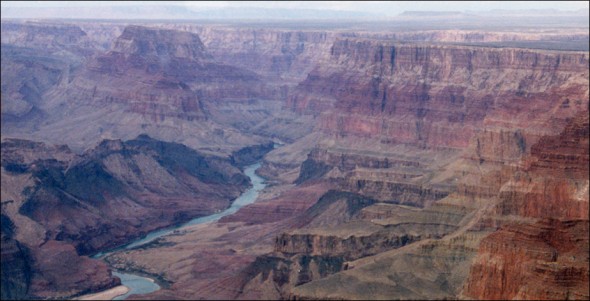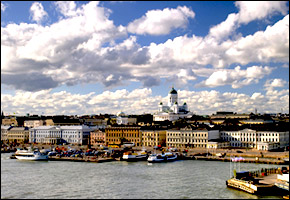U.S. Administration Bans Uranium Mining Near Grand Canyon
The decision by the U.S. Department of the Interior was applauded by environmental groups for protecting the Colorado River watershed and criticized by industry organizations for hurting jobs and energy security.
On Monday, the U.S. Department of the Interior banned any new uranium and other hardrock mining claims around the Grand Canyon, citing the potential health and environmental risks related to water contamination, Reuters reported.
The decision withdraws more than 400,000 hectares (1 million acres) of federal land — as well as the nearby watershed — for the next 20 years, the longest moratorium allowed by law, according to the official statement. Previously approved mining claims and existing mining operations would not be affected. The National Mining Association has expressed disappointment but stopped short of announcing an immediate challenge to the decision.
“A withdrawal is the right approach for this priceless American landscape,” Interior Secretary Ken Salazar said in a statement. “People from all over the country and around the world come to visit the Grand Canyon. Numerous American Indian tribes regard this magnificent icon as a sacred place and millions of people in the Colorado River Basin depend on the river for drinking water, irrigation, industrial, and environmental use.”
While hailed by environmental and progressive groups for protecting this World Heritage site and its neighboring Colorado River watershed, the Obama administration’s decision has been denounced by industry groups and some members of Congress from Western states as a big-government move that would hurt consumers and kill new jobs, according to Reuters.
Representative Doc Hastings, a Republican from the state of Washington who chairs the House Natural Resources Committee, accused the administration of “putting politics above American jobs and American energy security.”
But Gene Karpinski, president of the League of Conservation Voters, said that protecting the $US 687 million tourism industry that is dependent upon the canyon makes much more sense, according to the Guardian. “Extending the current moratorium on new uranium mining claims will protect tourism-related jobs, drinking water for millions downstream, and critical wildlife habitat,” Karpinski said.
As the price of uranium has risen, so has the number of claims on public land near the national park, from fewer than 1,000 per year in 2005 to more than 8,000 in 2009, though annual claims have declined slightly since then, according to Reuters, which cited figures from the Bureau of Land Management (BLM).
“The withdrawal maintains the pace of hardrock mining, particularly uranium, near the Grand Canyon,” BLM director Bob Abbey said, “but also gives the Department a chance to monitor the impacts associated with uranium mining in this area. It preserves the ability of future decision-makers to make thoughtful decisions about managing this area of national environmental and cultural significance based on the best information available.”
During the withdrawal period, the BLM projects that up to 11 uranium mines, including four that are currently approved, could continue, based on valid pre-existing rights. By comparison, during the 1980s, nine uranium mines were developed on these lands and five were mined out. Without the ban, there could be 30 uranium mines in the area over the next 20 years, including the four that are currently approved, with as many as six operating at one time, the Environmental Impact Statement (EIS) estimates, according to the Interior Department’s statement.
At least one creek in the national park is known to be contaminated by uranium, and the government’s environmental impact review found high levels of arsenic from old uranium operations, as well as pollution in the Colorado River, the Guardian reported.
The decision to ban new mining claims in the area comes after more than two years of evaluation, during which the BLM analyzed the proposed withdrawal in cooperation with the U.S. Forest Service, U.S. Geological Survey, U.S. Fish and Wildlife Service, and the National Park Service.
Source: Guardian, Reuters, U.S. Department of the Interior
, a Bulgaria native, is a Chicago-based reporter for Circle of Blue. She co-writes The Stream, a daily digest of international water news trends.
Interests: Europe, China, Environmental Policy, International Security.








Leave a Reply
Want to join the discussion?Feel free to contribute!